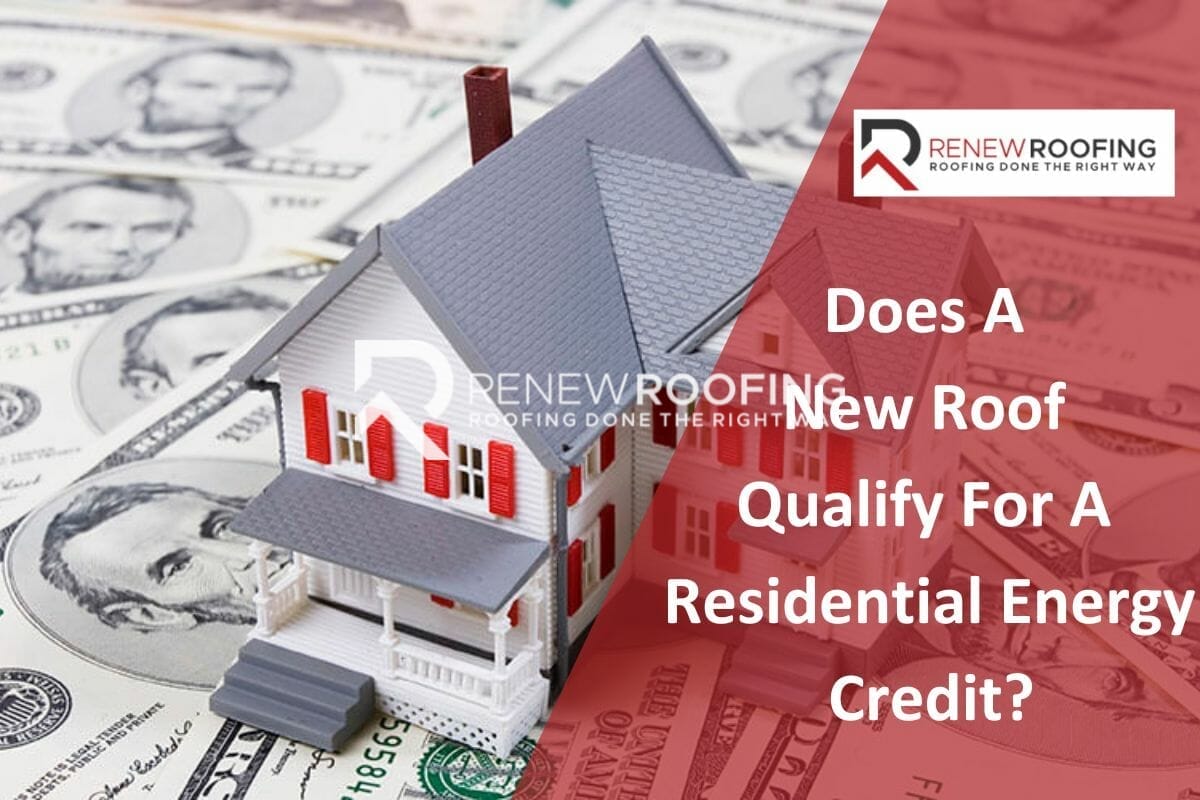Did you know that upgrading your home’s roof not only enhances its appearance but also puts money back in your pocket? But how does a new roof qualify for a Residential Energy Credit? As government agencies incentivize eco-friendly upgrades, your new roof could qualify for tax credits or rebates. In this blog post, we will go into more detail about the financial perks of a newly installed energy-efficient roof and how it could lead to substantial savings while benefiting the environment.
Discover the key components that make up a roof and unlock the potential for savings and environmental benefits! Explore our comprehensive picture guide on “Parts of a Roof: 21Key Roof Components’’ to learn how upgrading your roof can qualify you for Residential Energy Credits.
What is Residential Energy Credit?
The Residential Energy Credit, also known as the Residential Clean Energy Credit, is an incentive from the U.S. government to encourage homeowners to install more sustainable home exterior materials and products.
Unlock Savings with the Residential Clean Energy Credit (RCEC)
Are you a homeowner looking to make your home energy-efficient and save money? The RCEC can help!
#1 How It Works
When you make energy-efficient upgrades to your home, you can claim a tax credit for up to 30% of the cost of those improvements. And there’s no limit on how much you can claim.
#2 What Can You Upgrade?
The RCEC covers many home improvement projects, like:
- Solar panels
- Energy-efficient windows, doors, and skylights
- Air conditioners and heat pumps
- Water heaters
- Home appliances
Important Dates:
- This credit is only available before January 1, 2033.
- After January 1, 2033, the credit percentage drops from 30% to 26%.
- Starting in 2024, the percentage decreases again to 22%.
So, whether you’re dreaming of harnessing the power of the sun or just want to replace those old windows, the RCEC has got your back. These upgrades not only make your home more comfortable but are also kind to the environment.
#3 What Is The Credit Limit For A Fuel Cell Property?
When it comes to the fuel cell property credit, there rules are a bit different:
Credit Limits for Fuel Cell Property
If you live in a qualified fuel cell property:
- You get up to $500 in credits for every half kilowatt of capacity.
- If there is more than one person in the household, the combined credit for all residents can’t go above $1,667 for every half kilowatt of fuel cell capacity.
Let’s Break it Down:
- In this scenario, you are living at a fuel cell property with a capacity of one kilowatt.
- As a single person, you’re eligible for a $1,000 credit, $500 per half kilowatt.
- If you’re sharing the property with three other people, the total credit maxes out at $1,667 per half kilowatt, making your total $3,334.

Who Can Qualify For A Residential Energy Credit?
Getting a Residential Clean Energy Credit is a great way to save money while being kind to the environment. But, there are a few things to keep in mind:
1. Who You Are: You need to be the owner of the home or living where you’re making the improvements.
2. Main Residence: The house you’re upgrading needs to be your main home, meaning a rental property will not qualify unless you personally live there. Vacation homes and second homes may qualify, depending on your specific circumstances.
3. Location of Construction: The upgrades should be done to the actual home, not an additional structure like a shed or garage.
4. Right Timing: Plan your upgrades before December 31, 2032 – that’s your window for claiming the credit.
5. Quality Check: The improvements you’re making to your home need to meet specific energy-efficient or renewable energy criteria. For example, even though roofing materials like shingles are used to mount solar panels, a new shingle roof does not qualify. But, solar shingles do qualify because they generate renewable energy.
Trying to understand tax credits can sometimes feel like navigating a maze, so it’s always good to double-check the latest information or chat with a tax expert to make sure you’re on the right track.
How to Claim the Residential Clean Energy Credit
Here’s a step-by-step guide to claiming your Residential Clean Energy Credit:
Step 1: Complete the Energy-Efficient Projects
First things first, make those energy-efficient improvements to your home. Check out the IRS website for the list of improvements that qualify. Projects that qualify include solar panels, cool windows, efficient doors, and even appliances like air conditioners, heat pumps, and water heaters.
Step 2: Keep Your Paperwork
Hold onto your receipts and other important documents that show you’ve made these improvements. You’ll need these to prove when and where the work was done.
Step 3: Fill Out The Form
Grab form 5695 Residential Energy Credits from the IRS website. Don’t worry though, filling out the form is not as complicated as it sounds. Complete the first part of the form and attach it to your federal tax return.
Step 4: Fill in the Blanks
Now’s the time to add up those credits. Depending on the type of improvement and how much you spent, you’ll find the exact credit amount on the IRS website. Add the number to your tax return.
Step 5: Enjoy the Credits
The credit you’ve earned will be subtracted from your tax bill. If it’s more than what you owe, you can save the extra for later, as the credits will roll over into the next year.
After going through this article you might be wondering, is the Residential Energy Credit refundable? No, the Residential Energy Credit doesn’t come with a refund option. It’s what they call a nonrefundable tax credit, you can only use it if it’s more than what you owe in taxes.
Conclusion
So, does a new roof qualify for a Residential Energy Credit? Yes! If you’ve installed qualifying energy-efficient materials, you can receive 30% of the total cost back in tax credits. Remember, it’s not just about protecting your home, it’s about saving money and the environment at the same time. So, next time you look up at your roof, know that there’s a bit more to it than meets the eye.
At ReNew Roofing in Wisconsin, we understand that upgrading your roof to energy-efficient materials isn’t just a smart move, it provides potential savings too. If you are interested in replacing your current roof, don’t hesitate to reach out to our team at (813) 400-3329 for the best residential roofing service in Wisconsin. Take the first step towards your own energy-efficient roof today!






